Table of Contents
If you are new to gaining knowledge about roofing parts, you are probably oblivious to the components that are not only functional but also aesthetic. Folks, learning about roofing and its parts can be exciting as it decodes several functional elements, such as a fascia. New to the term, Huh? Don’t worry; I am here to help you. It is a structure that sits right beneath the roof’s overhand, with the gutter. However, sometimes damage due to any reason might call for a repair. Fortunately, in this article guide, we will cover a detailed process to repair a roof fascia and protect your house.
Understanding Fascia Boards and Their Purpose
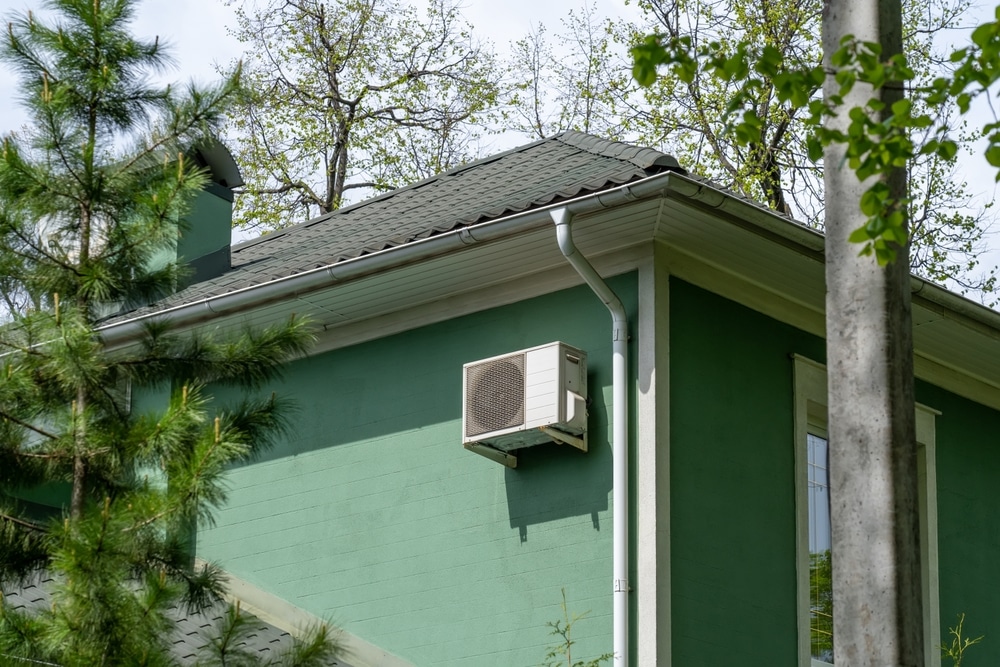
Fascia boards run horizontally along the part of the roof where the roof meets the walls of your house, providing a finishing touch that covers the exposed roof rafters and supports the lower edge of the roof.
Function of Roof Fascia
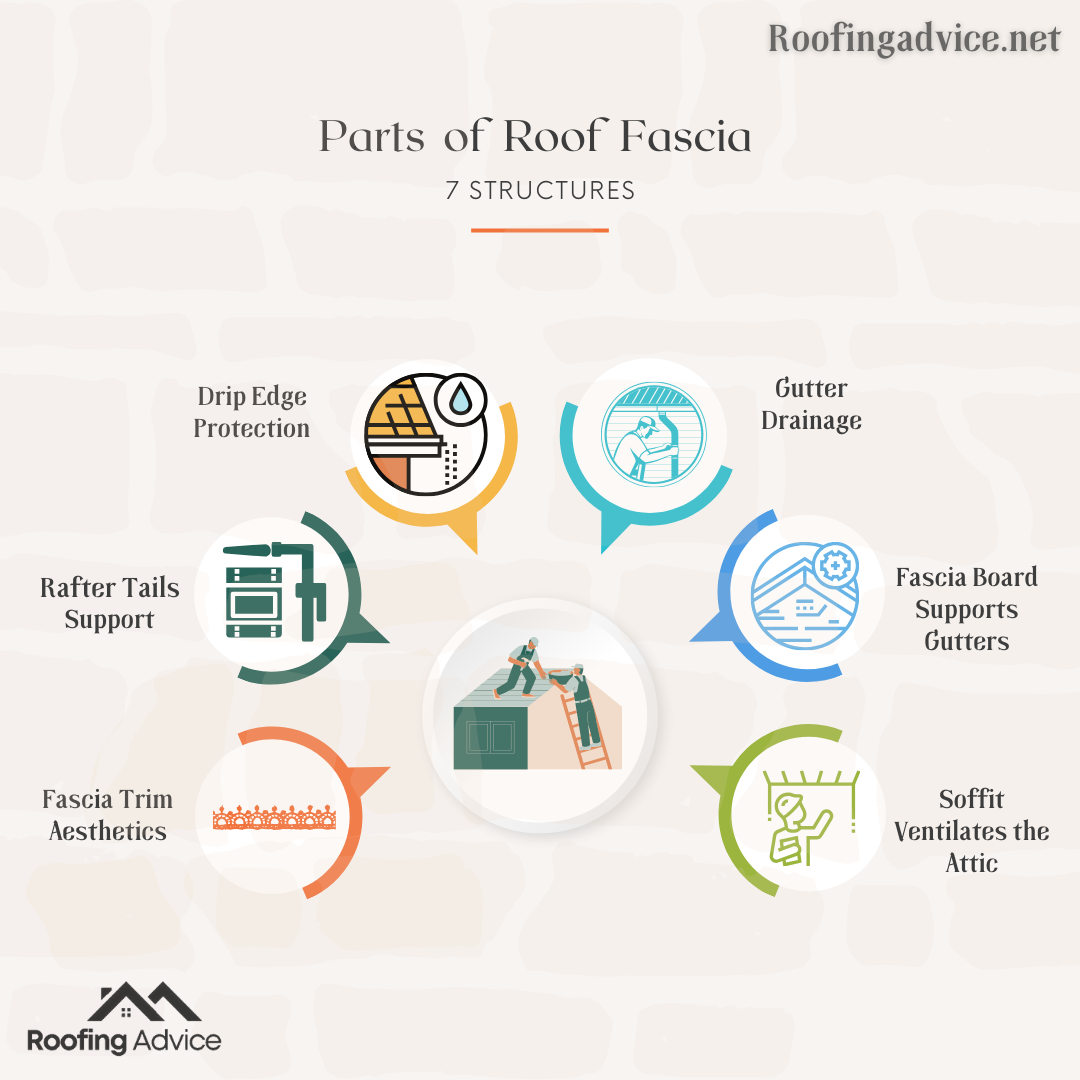
The primary functions of fascia include:
- Fascia support: It supports the bottom edge of the fascia roof and the gutter system.
- Water Damage Protection: It prevents moisture damage from infiltrating the roof’s edge.
- Aesthetic Appeal: It provides a smooth, finished appearance to the roof fascia of a house.
When fascia boards are damaged, they can lead to further structural issues such as wood rot or water damage to the roof, walls, or foundation. Immediate repair or fascia board replacement is essential to protect your home.
Signs That Your Fascia Needs Repair
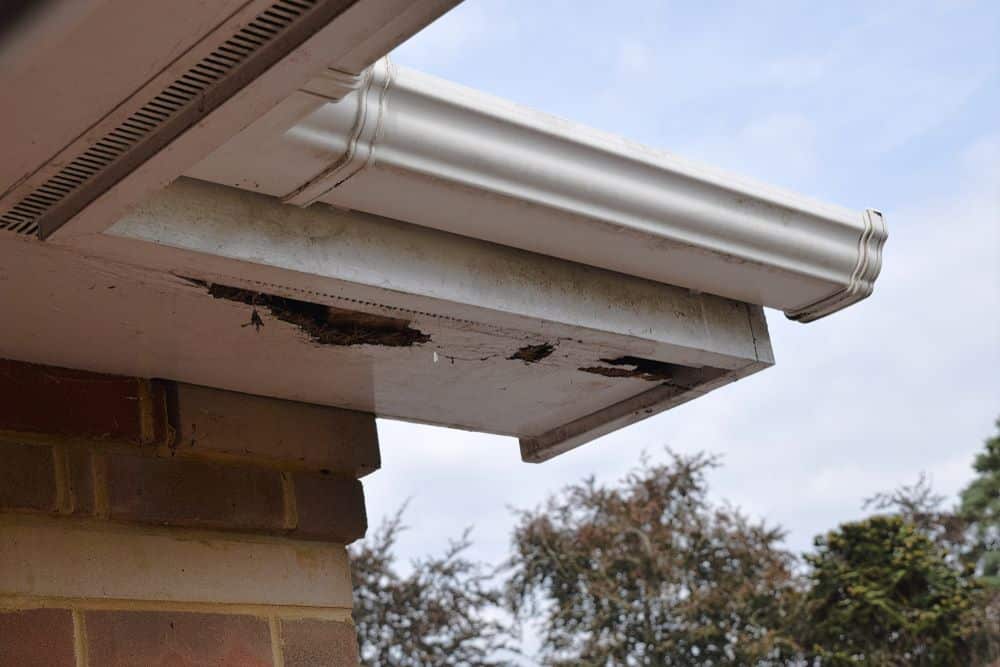
Before explaining the repair process, it’s essential to identify whether your fascia needs fixing.
Look out for these warning signs:
- Rotting Wood: Wood rot is the most common cause of damage to fascia boards due to moisture infiltration.
- Peeling Paint: Excessive moisture damage can cause paint to peel, indicating fascia deterioration.
- Sagging Gutters: If the fascia support is failing, gutters might sag or pull away from the roof.
- Cracking or Warping: Age, moisture, or pests can cause soffits and fascias to crack or warp.
Materials and Tools
Folks, let’s gather the necessary materials, including tools, to repair the roof fascia.
Here’s what you’ll need:
Materials
- Replacement fascia board (preferably composite fascia board or treated wood)
- Galvanized nails or screws
- Wood filler (for minor repairs)
- Exterior-grade caulk
- Primer and paint (for wood fascia)
- Protective sealant (if required)
- Aluminum drip edge (optional, to further prevent moisture)
Tools
- Pry bar or hammer
- Circular saw, or hand saw
- Measuring tape
- Level
- Ladder
- Safety gear (gloves, safety glasses)
Preparation
Before starting any roof fascia repair, ensure you have safe access to the roof. Use a stable ladder and always have someone around to assist if necessary. If the damage is extensive, it is advisable to consult a professional roofer for safety.
Steps for Preparation
- Remove Gutters: Start by carefully removing any gutters attached to the fascia. This can typically be done using a screwdriver to remove the screws or a pry bar to detach the gutters.
- Inspect the Roof: Check for signs of roof damage, including issues with the soffits and fascias and the roof rafters. Repair any damage before fixing fascia boards to prevent recurring problems.
Step-by-Step Repair Process
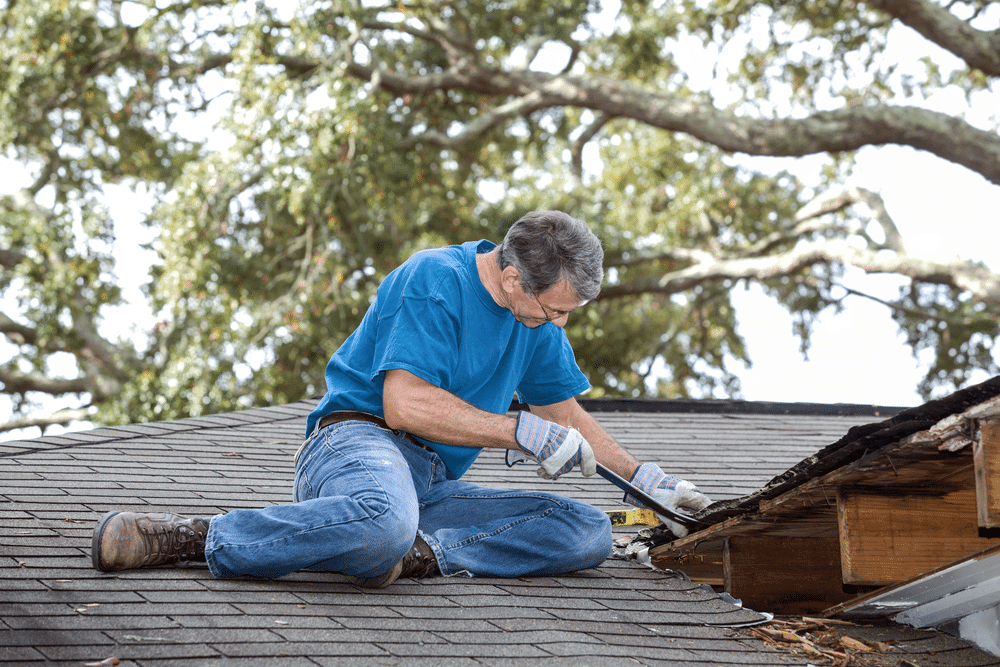
Below is the detailed process to repair this critical structure:
1. Remove the Damaged Fascia
Carefully remove the damaged section of the fascia using a hammer and pry bar. Be gentle to avoid damaging the surrounding roof system. If the fascia is nailed in place, you might need to cut the nails with a reciprocating saw.
- Pro Tip: Remove one section at a time to maintain structural integrity and prevent unnecessary damage.
2. Inspect the Underlying Area
Once the fascia is removed, inspect the underlying roof fascia of a house for any signs of water damage or rot. If the roof rafters or soffits are damaged, they should be repaired before replacing the fascia. Make sure the area is dry, clean, and structurally sound.
3. Measure and Cut the New Fascia Board
Measure the length of the fascia board that needs replacement. Transfer the measurements onto your new board and cut it to the size of the fascia board using a circular saw or handsaw. Make sure the board is precisely cut to fit snugly against the roofline.
- Tip: Use composite fascia board for durability and weather resistance.
4. Attach the New Fascia
Align the new fascia board with the edge of the roof and secure it in place using galvanized nails or screws. Start at one end and work your way along the board to ensure it is level and securely attached.
- Pro Tip: Pre-drill holes into the fascia to avoid splitting the wood.
5. Seal and Protect the Fascia
To ensure the longevity of your new fascia, apply a protective sealant around the edges. If you’re using wood, apply an exterior-grade primer and paint to match the existing trim.
- Caulking: Apply caulk where the fascia roof meets the roof and at the joints to prevent water from seeping into the seams.
- Optional Drip Edge: Consider installing an aluminum drip edge on top of the fascia to direct water away from the roofline and prevent future water damage.
6. Reattach the Gutters
Once the fascia is secured and painted, you can reattach the gutters. Make sure the gutters are firmly in place and aligned to prevent sagging or pulling away from the roof.
Additional Tips for Fascia Maintenance
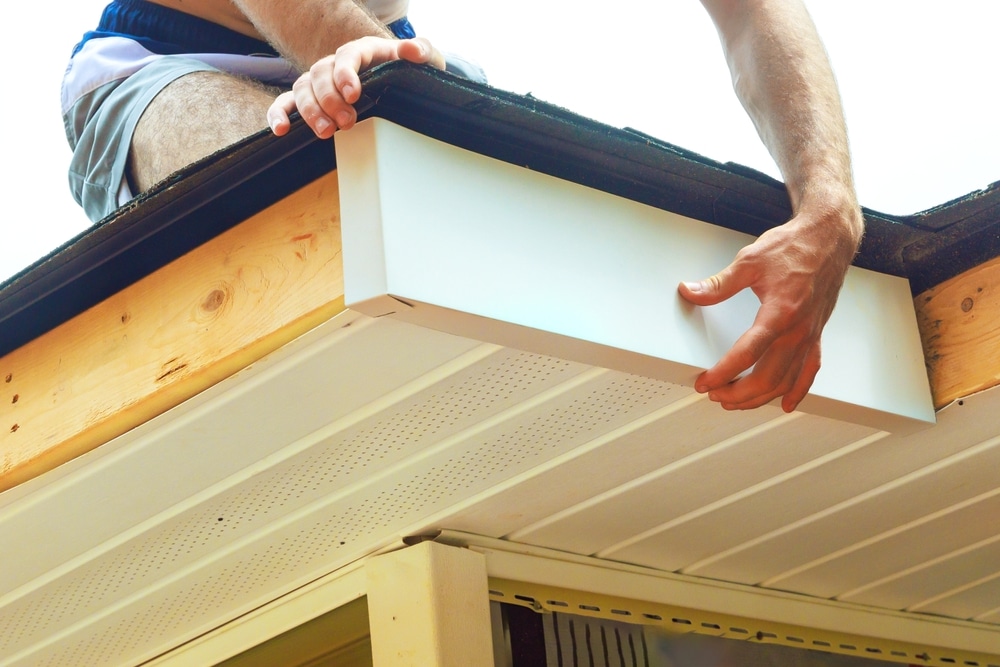
- Regular Inspections: Check the fascia in roofing at least twice a year, especially after severe weather, to identify and address potential issues early.
- Gutter Maintenance: Keep gutters clean and free from debris to prevent water overflow, which can damage the fascia board.
- Paint or Seal Regularly: If you have wooden fascia boards, repaint or reseal them every few years to protect them from weather damage.
When to Call a Professional
While many repairs or replacements can be handled as a DIY project, there are situations where it might be best to hire a professional.
These include:
- Severe damage to the fascia roof or soffits and fascias.
- Extensive rot or mold growth, indicating structural problems.
- Height concerns if the fascia is located in a difficult-to-reach area.
Materials for Fascia Replacement
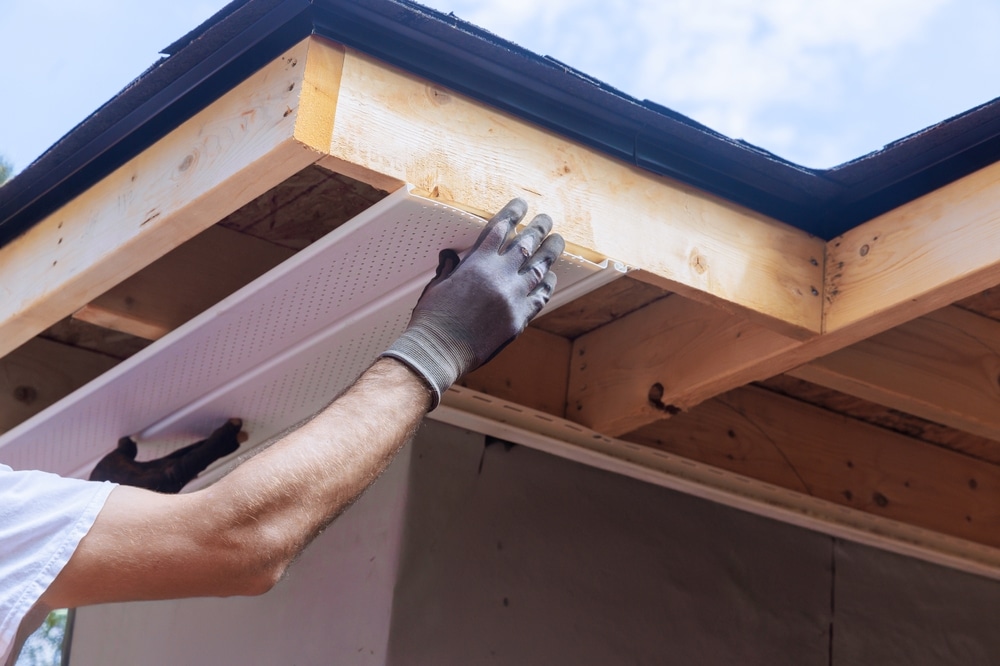
Do you know homeowners have more options than ever for fascia board materials? When choosing types of fascia materials, consider the following:
- Wood: Traditional, offers a natural look but requires regular maintenance.
- PVC or Vinyl: Low-maintenance, weather-resistant, and a popular choice for modern homes.
- Fiber Cement: Durable, rot-resistant, and available in a variety of finishes.
- Composite Fascia Board: Made from a mix of wood fibers and plastic, it provides durability and low maintenance.
Cost of Fascia Repair in 2024
The cost of repairing fascia boards depends on the materials used, the extent of damage, and whether you hire a professional. The average cost for fascia board replacement ranges from:
- DIY: $2–$5 per linear foot for wood or PVC fascia, plus additional costs for nails, caulk, and paint.
- Professional Repair: $600–$1,500, depending on the size of the project and the material used.
Having covered that, it is paramount to know about other important roof components, such as the roof soffit, the details of which are mentioned in this article.
Final Words
Summing up what has been discussed so far, replacing and repairing the fascia board is a vital part of maintaining your home’s structural integrity and aesthetic appeal. With the right tools, materials, and a step-by-step approach, you can successfully repair or replace fascia boards, protecting your roof from water damage and extending its lifespan. Whether you choose a DIY roof fascia repair or call in a professional, keeping fascia in good condition will ensure your home stays protected for years to come.
Protect Your Home!
